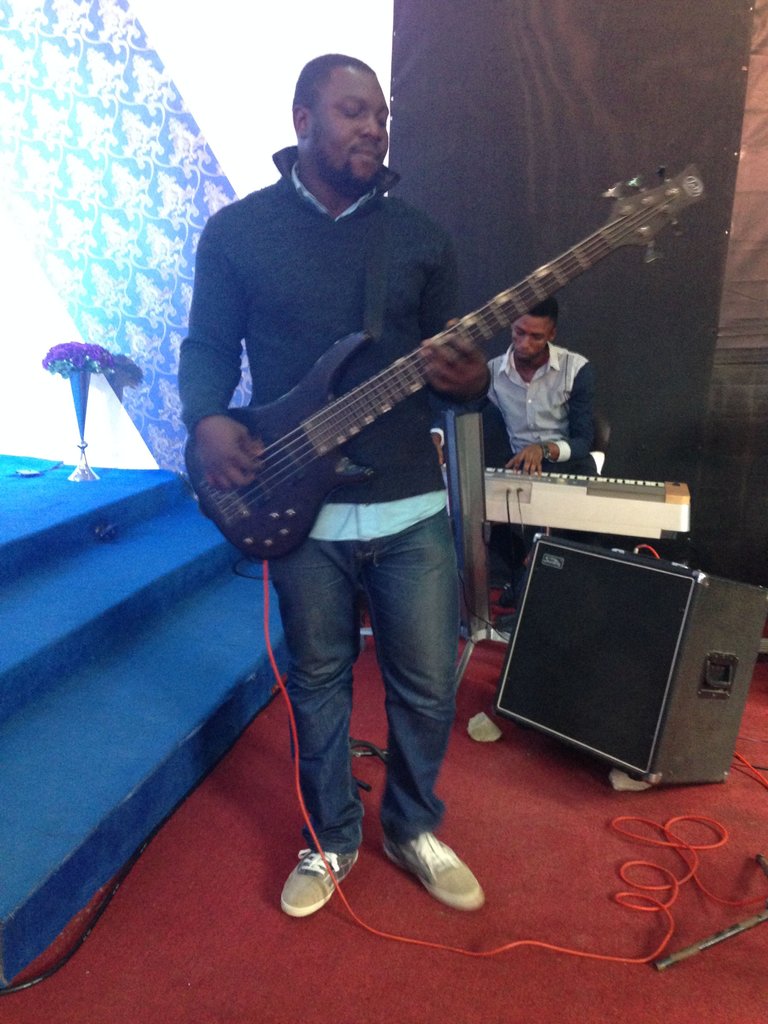Hi everyone, this is your boy Bawo Okorefe 
If you look up the history of the bass guitar, most online references say that it begins in the 1950s with the Fender Precision electric bass. While that’s partially true, the history of the bass guitar began long before that. The Fender Precision was the first mass-produced and widely distributed electric bass, but it wasn’t the first ever made.

.jpg)
There was the electric double bass invented by Lloyd Loar in 1924, and the electric bass fiddle invented by Paul Tutmarc in the 1930s. But even before the electric bass, the guitarrón, also known as a "fingernail bass," was a fixture in Latin music as far back as the early 1600s.
The one thing that all of these versions of the bass have in common is that they were designed to replicate the sound of much larger stringed instruments, in most cases the upright bass, in a more portable and manageable format. In the case of the electric bass, it was also designed to amplify the low notes, which would often be drowned out by the other instruments.
Today, the guitarrón is most commonly seen in Mariachi bands, but it is still widely used in other types of acoustic Latin folk music. The electric bass and acoustic versions are used in a variety of music from classical to rock.
You can teach yourself how to play bass, but because there are so many playing techniques, it's often best to learn a little about the instrument through lessons, either in person or by taking bass guitar lessons online.
Playing Techniques
There are several techniques for playing the bass guitar depending on the style of music you are playing and the effect you wish to achieve. Below is an outline of some of the more common techniques, and the artists who use them.
Slap and Pop
The slap and pop technique involves thumping, or slapping, the strings with your thumb, while snapping or popping the strings with your fingers. The technique is most often used in funk music, but also has its place in rock and fusion styles. Famous slap and pop bassists include Larry Graham of Sly and the Family Stone, and Flea of the Red Hot Chili Peppers.
Picking
Picking involves using a pick to strum the bass -- the pick provides for greater accuracy and speed, than just your fingers. Picks come in varying thicknesses and are made of a variety of materials, all of which produce different tonal effects. Picking is used in a variety of music styles by artists like Roger Waters of Pink Floyd and Kim Deal of The Pixies.
Palm Muting
Palm muting involves resting the outer edge of your palm on the bridge to mute the strings while you play. It's usually used in combination with picking. The technique is used in a variety of music styles by artists like Paul McCartney and Sting.
Fretting
Fretting is a blanket term for a variety of techniques that involve striking, plucking, or adjusting the strings along the neck of the guitar. Placing your fingers on different point on the neck to make different notes is fretting, as is moving the finger to make a vibrating sound. Some bassists also play the fret by tapping or plucking the strings to make sounds, Les Claypool of Primus and Victor Wooten.
Types of Bass Guitars
There are several different types of bass guitars and they all serve different purposes.
Traditional bass guitars are made of wood -- with different species of wood for the body, neck, and bridge -- and have four metal strings tuned to E, A, D, and G. The neck usually has crossbars, called frets, which divide the fingerboard into different tonal areas.
However, some bass guitars are made of other materials, like graphite, exotic woods, and resins. You can also find bass guitars with anywhere from five to twelve strings, although the eight - and twelve-string models tend to have pairs of strings meant to be played together to produce a single sound. There are also models that do not have frets along the neck, which allows for more subtlety of sound than the fretted models.
Bass guitars with eight or twelve strings are often used in amore classical context, where the artist might need to make a lot of complex sounds; whereas basses with fewer strings might see more use in popular music, like rock, blues, and jazz. The same logic could apply to the use of frets.
Although the bass doesn't get a much attention as the guitar, it is actually a very important part of any ensemble because it carries the rhythm. That's why it is used in so many different styles of music.
I hope you all learnt something new today.
Don't forget to upvote my post and comment, have a nice day folks.
Nice Article, loving the bass guitar
Hi! I am a robot. I just upvoted you! I found similar content that readers might be interested in:
https://www.thefourohfive.com/music/article/a-brief-history-of-the-bass-guitar-141
Thanks @cheetah, not everyone could get the link so i decided to share here too and thanks for sharing the link.